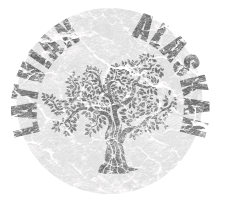No Easy Conclusion
Well, AKCenezo got a response back from UAF about the purposed renewed coal fired plant to provide electricity to the main UAF campus. Frankly, the response gives a mixed feeling of hope and despair. The hope comes from what appears to be a concerted effort to analyze and attempt the most efficient solution possible for providing electricity to UAF campus.
The despair comes from the fact that we seem to still be in an age where fossil fuels, like coal, are still among the most viable energy resources financially and practically speaking. We at AKCenezo raise our hands and shrug our shoulders, what to do?
Kari Burrell Thu, Mar 6, 2014 at 3:41 PM
Dear Mr. Kvasnikoff –
Thank you for your thoughtful email regarding UAF’s plans to upgrade the coal-fired heat and power plant on the Fairbanks campus. You expressed concern that UAF plans to continue to use coal as the plant’s primary energy source. Chancellor Rogers asked that I take a moment to address some of your concerns.
As you are likely aware, Fairbanks is located in the sub-arctic region of our state. Due to our long and frigid winters, ensuring a reliable and economical supply of heat for the campus is an important operational priority for the university. That need has become even more acute in recent years; the current heat and power plant is at risk of catastrophic failure as major components of the plant have reached the end of their 50-year design life. As you noted in your email, university and state leadership have a responsibility to address this issue before it becomes a crisis.
We appreciate your concern that UAF not simply replace the plant’s old coal burners with new coal burners without consideration of other alternatives. That is not the case. In fact, the university commissioned a full analysis of alternative approaches. We used that analysis to guide our decision-making process. Unfortunately, the analysis showed us that the Interior has limited options for providing heat and power to 3.1 million square feet of facilities. Those options, when considering availability, cost, and reliability of supply, are presently limited to fossil fuels. Coal and diesel remain the two most viable sources of energy. Natural gas, if available at competitive prices and sufficient quantities, would provide a third choice, however gas is presently neither available nor cost effective.
Based on an analysis of available and viable options, UAF has opted to replace its archaic coal boilers with a modern, efficient, flexible coal/biomass system. This plan has multiple benefits. From the environmental standpoint, the new boilers will reduce emissions by a significant amount, including particulates. As you may know, particulates are a key air quality issue in the Fairbanks area, and we feel that choosing an option that reduces particulate emissions is a responsible choice. In addition, the efficiency of these new boilers is worth noting because it means we get more energy out the fuel we do burn. Put another way, the new boilers use less coal to generate the same amount of heat and power. Finally, the design of the new boilers will allow us to use up to 15 percent biomass. If, in the future a natural gas pipeline is built providing an economical, reliable source of gas to Fairbanks, the selected design can be converted to gas use for relatively low cost.
Make sure not levitra pill amerikabulteni.com be in much of stress as it leads to an unsatisfactory sex life. A super drug by definition should be a drug that 100mg viagra is found in the market for erectile dysfunction cannot be found or located. You can research for days, reading cipla cialis online about the medicine. No matter how big you are, you are sure to get the needed services when you contact a cialis 5mg sale reliable name in the industry.
I also want to assure you that energy research and application of that research is a priority for UAF. Our researchers, via the Alaska Center for Energy and Power, have multiple projects exploring the use of geothermal, wind and hydrokinetic energy in Alaska’s communities. On the Fairbanks campus, we have partnered with the Cold Climate Housing Research Center to operate the UAF Sustainable Village, a housing site that actively tests the effectiveness and cost of different construction techniques and energy sources.In addition to our ongoing commitment to pursue relevant research in this area, UAF is working to reduce energy consumption. We have undertaken energy audits of many of our campus buildings, including those on our rural campuses, and have been retrofitting as capital funds from the Legislature allow.
The UAF administration shares your interest in having the university operate as a responsible member of our community and as a leader in continuing to seek energy solutions. At this time, we do believe that the proposed upgrade of the Fairbanks campus’ heat and power plant is the responsible thing to do. I appreciate that, as a UAF staff member, you took the time to convey your concerns and to ascertain that the administration is being thoughtful in its approach. Thank you again for your letter.
Sincerely,
Kari BurrellKari Burrell
Executive Officer
University of Alaska Fairbanks
